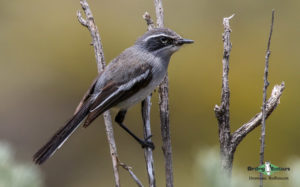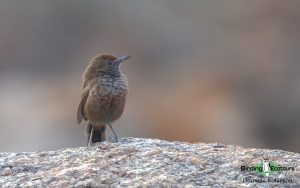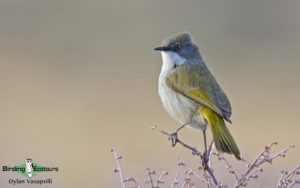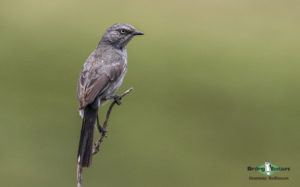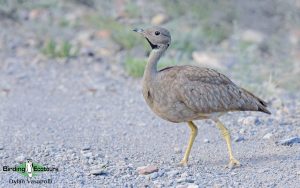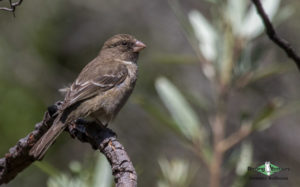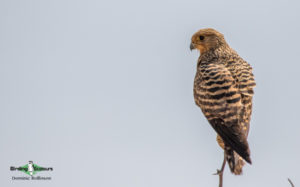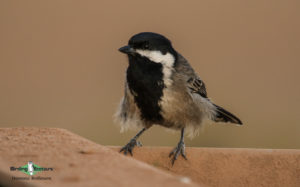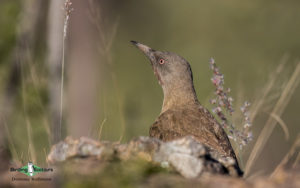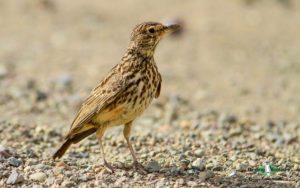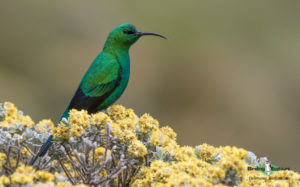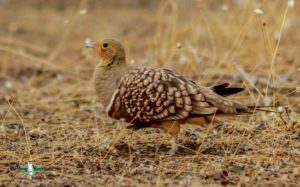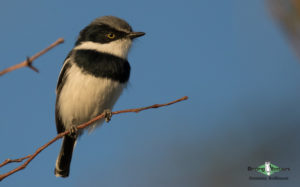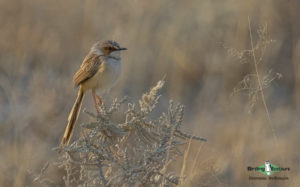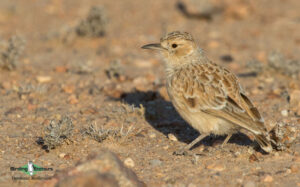3-day Tankwa Karoo Loop
3-DAY TANKWA KAROO BIRDING TOUR
(2-DAY VERSION ALSO AVAILABLE)
We fetch you from your hotel in the early morning and head through spectacular scenery to the beautiful town of Ceres (2.5-3 hours’ drive from Cape Town). Ceres is the gateway to the Karoo. The Karoo happens to be one of the greatest endemic hotspots on the entire African continent, and almost everything will be new to birders who have not yet visited these parts. We recommend this tour as a three-day birding tour however, should you be short of time, we can shorten it to a two-day tour and still target most (but not all) of the specials listed below.
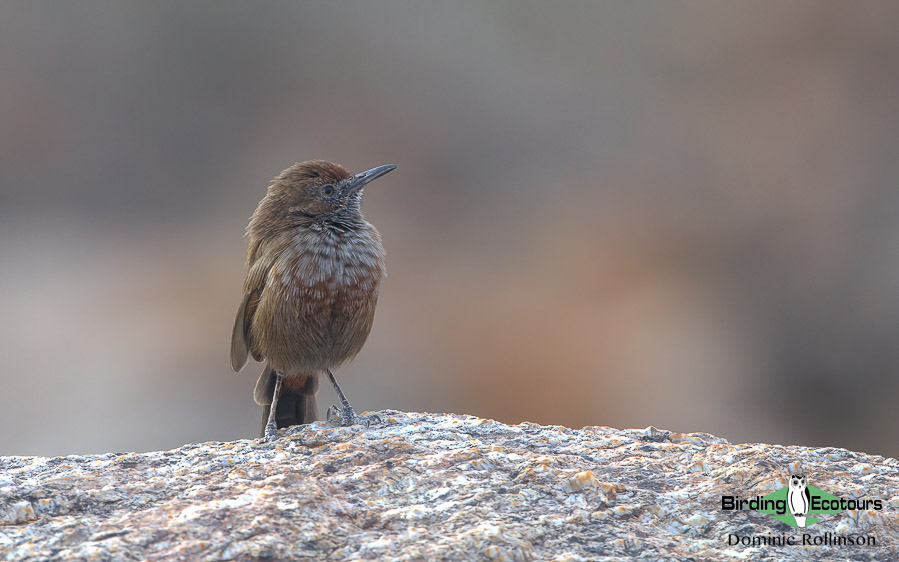
On the way to Ceres, we may also find some exciting mountain fynbos endemics such as Verreaux’s Eagle, Victorin’s Warbler, Protea Canary, Cape Sugarbird, Cape Siskin, and many others.
Soon after passing through Ceres, the impressive open plains of the Tankwa Karoo will appear and the birdlife will change markedly. New birds here will likely include a suite of endemics and near-endemics, including Karoo Korhaan, Tractrac and Karoo Chats, Karoo Eremomela, Pale Chanting Goshawk, Rufous-eared Warbler, Grey Tit, Karoo, Large-billed, and Spike-heeled Larks, Yellow Canary, and many others. One of the birding sites we will visit is a canyon near Katbakkies, which is the famed site for the bizarre, crevice-skulking Cinnamon-breasted Warbler. This canyon is also full of other incredibly exciting species such as the beautiful Fairy Flycatcher, White-backed Mousebird, Pale-winged Starling, Mountain Wheatear, Layard’s and Rufous-vented Warblers (Tit-babblers), White-throated Canary, and a host of other rock- and mountain-associated species. Booted Eagle is relatively common here in these dry parts of the south-western Cape.
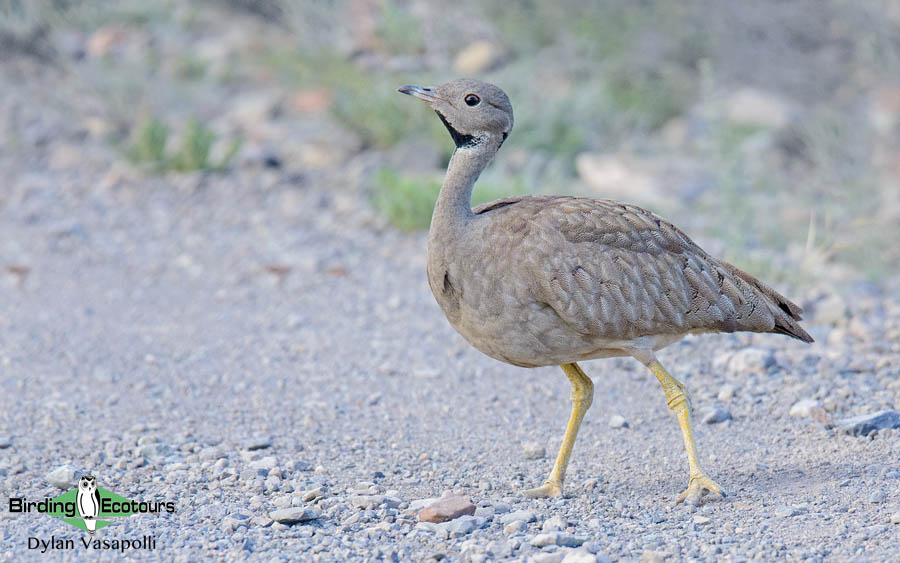
We will then continue to head north through the plains where our chances of finding Greater Kestrel, Namaqua Sandgrouse Namaqua Dove, Karoo Long-billed Lark, Tractrac Chat, Lark-like Bunting and Dusky Sunbird, and the rare and declining Burchell’s Courser (with luck), will have markedly increased. Dry river beds in the area usually hold Namaqua Warbler, Yellow-bellied Eremomela, Pririt Batis, and Long-billed Crombec.
At the right time of the year (spring) large numbers of Black-eared Sparrow-Larks push further south, from their regular haunts in the Northern Cape province, and on these trips, this desert nomad will be one of our biggest targets. In spring Ludwig’s Bustard also becomes easier to find, although it is still a tough bird in these parts. Black-headed Canary will also be targeted on this trip however it is also a highly nomadic species which can be very tricky to find, although there are certain areas where we will concentrate our searches.
Night drives in the Tankwa Karoo sometimes generate Rufous-cheeked and Freckled Nightjars, Cape (with lots of luck) and Spotted Eagle-Owls, Bat-eared Fox, Black-backed Jackal, Caracal (red lynx – with luck), and good numbers of other small mammals. After spending the night in the Tankwa Karoo, we continue birding for the whole of the next two days before eventually arriving back in Cape Town. Our aim is to find almost all the Karoo endemics.
Nearby patches of dry mountain fynbos can be visited to search for Cape Clapper Lark (easiest when they give distinctive display flight in spring), Grey-backed Cisticola, and occasionally small family groups of Ground Woodpeckers. It is also possible to search for some fynbos endemics such as Protea Canary, Cape Rockjumper, Cape Siskin, and others, in addition to all the Karoo species.
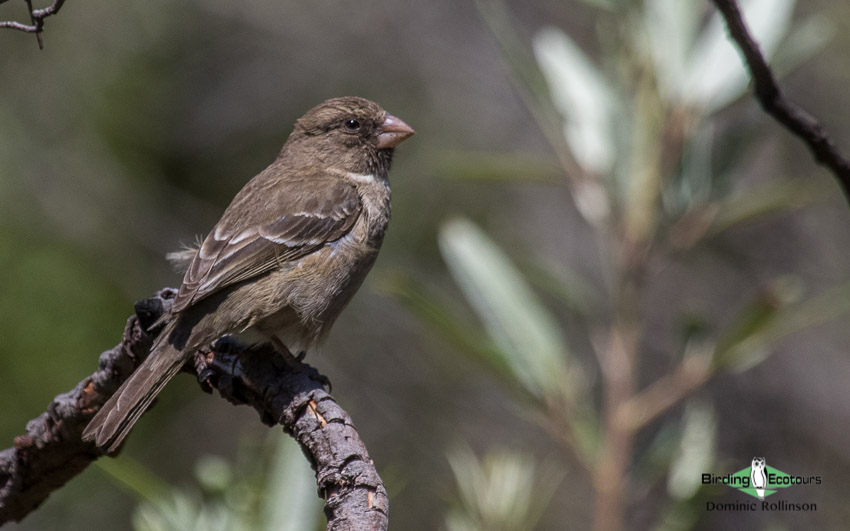
Recommendation
This three-day trip forms part of our longer Best of Cape Town and Beyond birding tour. We recommend combining this three-day trip with our three-day Agulhas Plains tour and/or a one-day West Coast or Cape Peninsula birding tour, if you have more than two but less than eight days available. To really clean up on South African birds, we recommend the eight-day Best of Cape Town and Beyond birding tour plus at least a portion of the Namaqualand and Kalahari birding trip, plus our two-week Subtropical South Africa birding tour.
The guide for our shorter trips/day trips is allocated only after you have booked, as all of them are run as private trips. But we always use the country’s top birding guides.
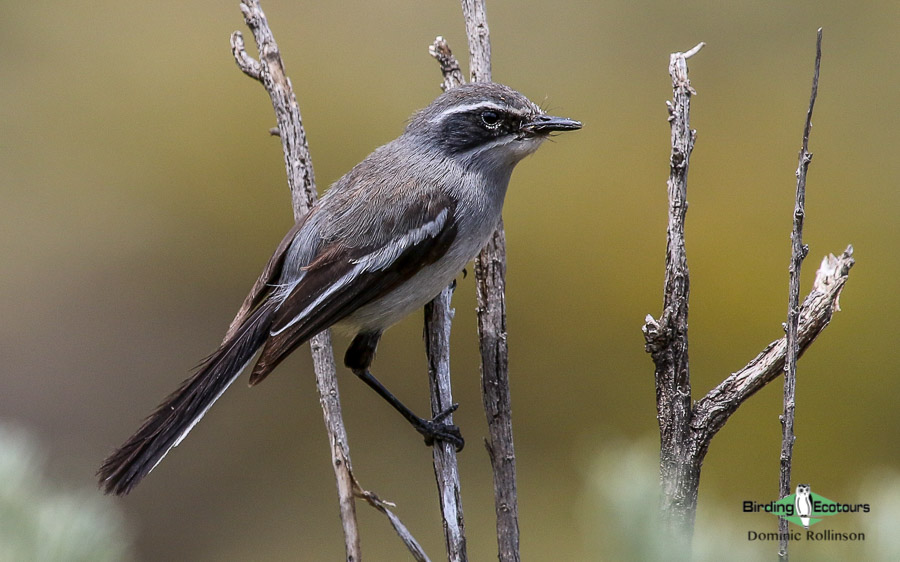 The cute Fairy Flycatcher is normally seen on this tour.
The cute Fairy Flycatcher is normally seen on this tour.
The guide for day trips is allocated only after you have booked, as all of them are run as private trips. But we always use the country’s top birding guides.
Download ItinerarySouth Africa: 3-Day Tankwa Karoo Birding Tour Report
By Dominic Rollinson
This is an example of a typical 3-day Tankwa Karoo birding trip report. Please email us ([email protected]) for more trip reports from this destination.
DOWNLOAD TRIP REPORT
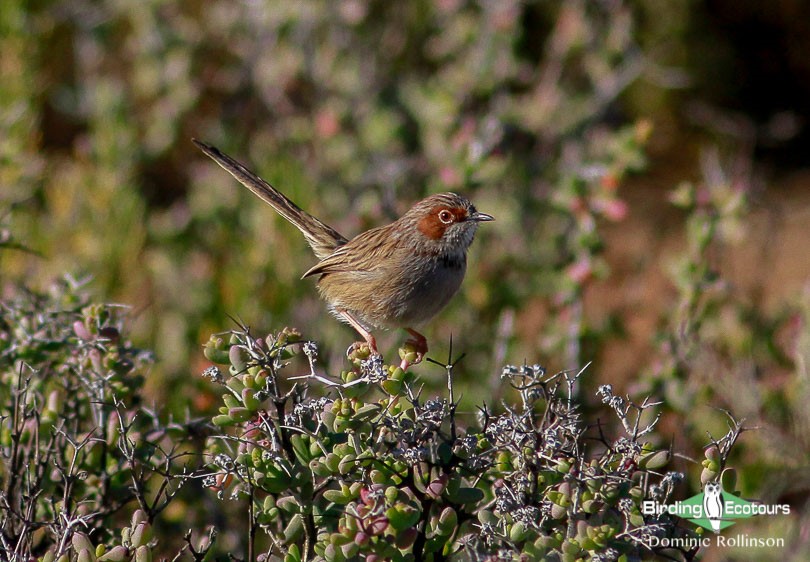
Overview
The semi-desert of the Tankwa Karoo hosts a number of South African endemics and near-endemics which form the focus of birding trips to the area. A Tankwa Karoo birding trip is unlikely to produce a large species list, however what few species are encountered are mostly specialists which are adapted to living in the harsh semi-desert conditions. Some of the important species we saw on this particular tour included Cinnamon-breasted, Rufous-eared, Namaqua and Layard’s Warblers, Karoo Eremomela, Karoo Korhaan, Karoo, Large-billed, Spike-heeled and Karoo Long-billed Larks, Namaqua Sandgrouse and Black-headed Canary. After the three days of birding, we had a decent list of 95 species which included many of the dry-country specials that we were after.
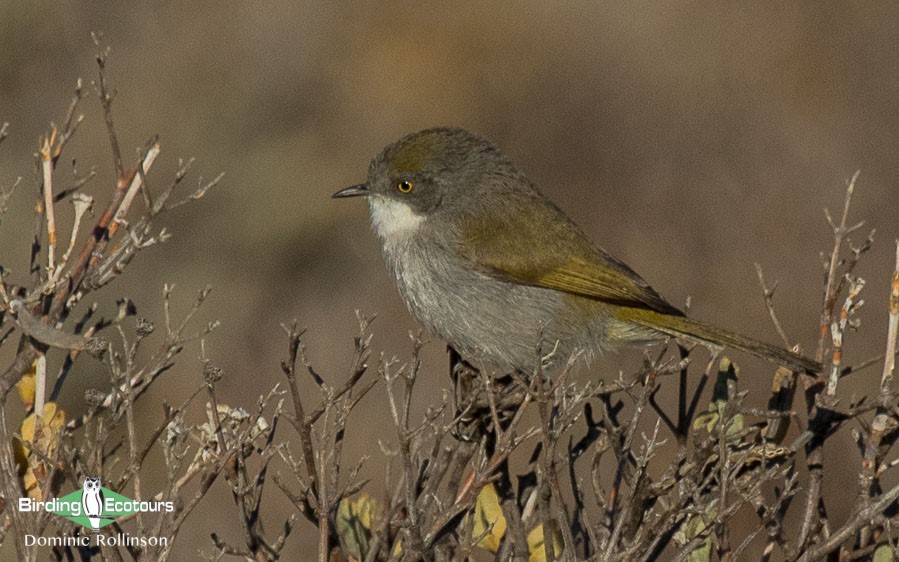
Detailed Report
Day 1, 18th January 2022. Cape Town to the Tankwa Karoo
We left the bright lights of Cape Town before dawn and were met by some very unseasonal weather in the form of low clouds and spots of rain as we drove along the Dutoitskloof Pass and arrived at our first scheduled birding stop. We would be targeting a few mountain fynbos specials here and managed birds such as Jackal Buzzard, Cape Siskin, Cape Bulbul, calling Cape Grassbird, Neddicky, Fiscal Flycatcher, Cape Sugarbird and the prize for the morning, a (relatively) showy Victorin’s Warbler. Unfortunately, our major target, Protea Canary, would not show for us.
From here, we made our way into the drier habitat of the Karoo where a roadside stop to scan a dam produced Lesser Flamingo, Cape Shoveler and a few other common waterbirds. Next, we scanned the dry scrub and acacia stands at Karooport, which yielded Namaqua Warbler, Namaqua Dove, White-backed Mousebird, Pied Starling and White-throated Canary. A large Black Spitting Cobra was seen in some nearby bushes which was a good reminder to watch where we stepped.
Making our way into the Tankwa Karoo proper, we birded the semi-desert plains which proved really worthwhile, and bagged us Pale Chanting Goshawk, Karoo Korhaan, Spike-heeled Lark, Karoo and Tractrac Chats, Karoo Scrub Robin, Rufous-eared Warbler, and a group of three Namaqua Sandgrouse as they slowly walked across the road. After birding the plains we enjoyed our lunch in the shade of some acacia trees at Skitterykloof gorge which had a feeding Fairy Flycatcher giving us great views as it went about its business. We worked the nearby bushes and scrub and managed to find Mountain Wheatear, Long-billed Crombec, Dusky Sunbird, White-throated Canary and some of the group managed brief views of the big target of the area, Cinnamon-breasted Warbler.
We finished off the day with Nicholson’s Pipit close to our accommodation and a scrumptious dinner as we enjoyed a beautiful Tankwa Karoo sunset and a drink. Unfortunately, the wind had picked up which meant our night drive did not produce much of interest besides a couple Scrub Hares.
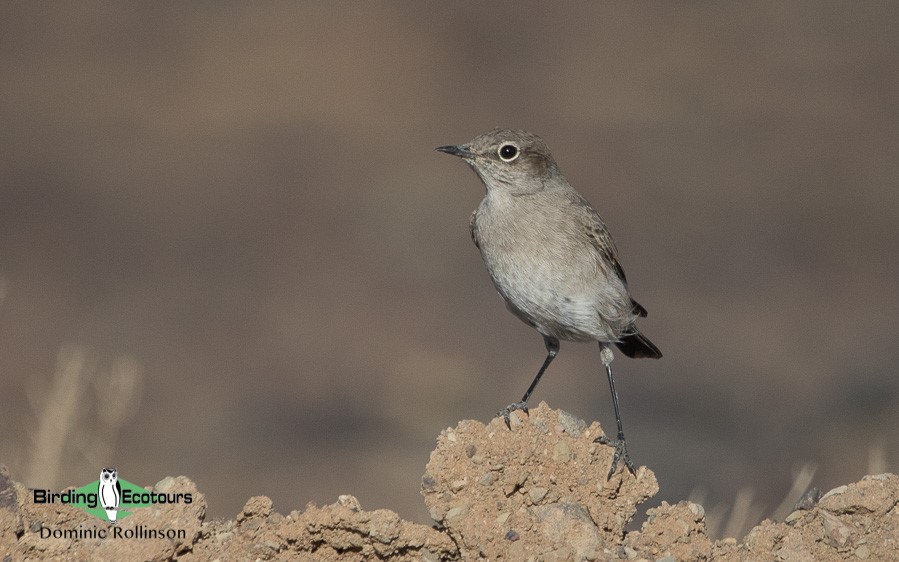
Day 2, 19th January 2022. Tankwa Karoo birding
We woke early with the exciting prospect of the whole day to bird the Tankwa Karoo. Almost immediately we improved our views of Rufous-eared Warbler and Karoo Lark, while a Grey Tit put in a brief appearance. In a dry rocky gorge, we all got onto the skulking Cinnamon-breasted Warbler and also found Grey-backed Cisticola and Layard’s Warbler nearby. Further up the gorge we managed to find a single Pale-winged Starling. Birding the open plains gave us great views of a small feeding flock of Karoo Eremomelas while the calling Southern Black Korhaan would not show itself. Our last birding stop before breakfast saw us working some palm trees, which yielded large numbers of Yellow and White-throated Canaries and a single Black-headed Canary.
After a lovely sit-down breakfast at our accommodation, we headed north towards the Tankwa Karoo National Park to try and track down a few remaining target birds. As we went further north, we started to see a few more Tractrac Chats, Pale Chanting Goshawks and other common Karoo species such as Karoo Chat, Large-billed and Red-capped Larks and Karoo Scrub Robin. A pair of South African Shelducks were also seen at a small farm dam near to the road. Once in the park we came across a large group of Common Ostriches, with a leucistic bird being a particularly bizarre sight. New birds for the trip included Grey-backed Sparrow-Lark, Lark-like Bunting, Greater Kestrel, Chestnut-vented Warbler, Pririt Batis, Karoo Long-billed Lark and we had good views of a flyover Booted Eagle. We searched the plains for Burchell’s Courser but despite our best efforts we couldn’t find any of these rare nomads.
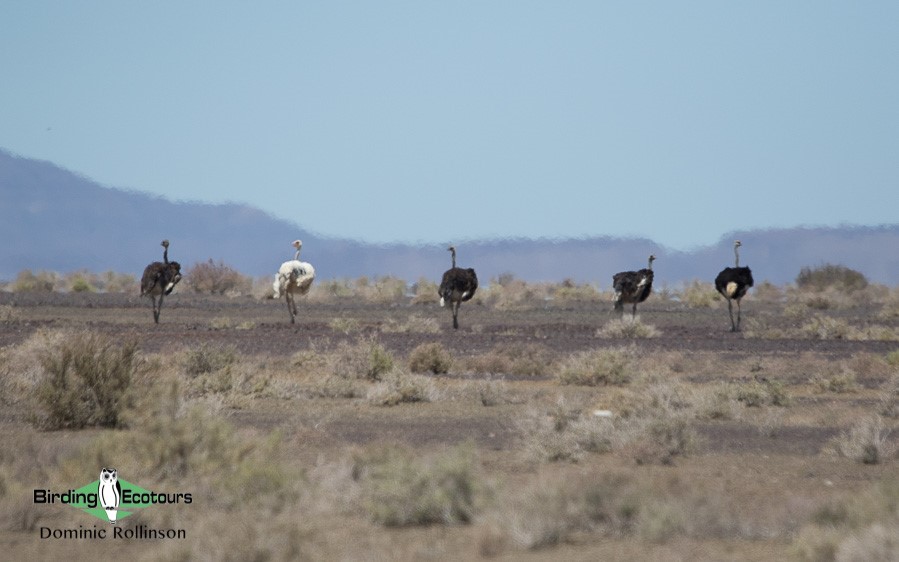
After the long drive back south, we finished the day off by enjoying some birding around our accommodation which produced further sightings of Layard’s Warbler, Bokmakierie, Cape Bunting and Red-faced Mousebird.
Day 3, 20th January 2022. Tankwa Karoo birding and return to Cape Town
Today was our last day in the Tankwa Karoo and we enjoyed the birding around our accommodation and Skitterykloof gorge which produced further sightings of South African Shelduck, Fairy Flycatcher, Grey Tit, Booted Eagle, Karoo Lark, Mountain Wheatear, Rufous-eared Warbler and Yellow Canary.
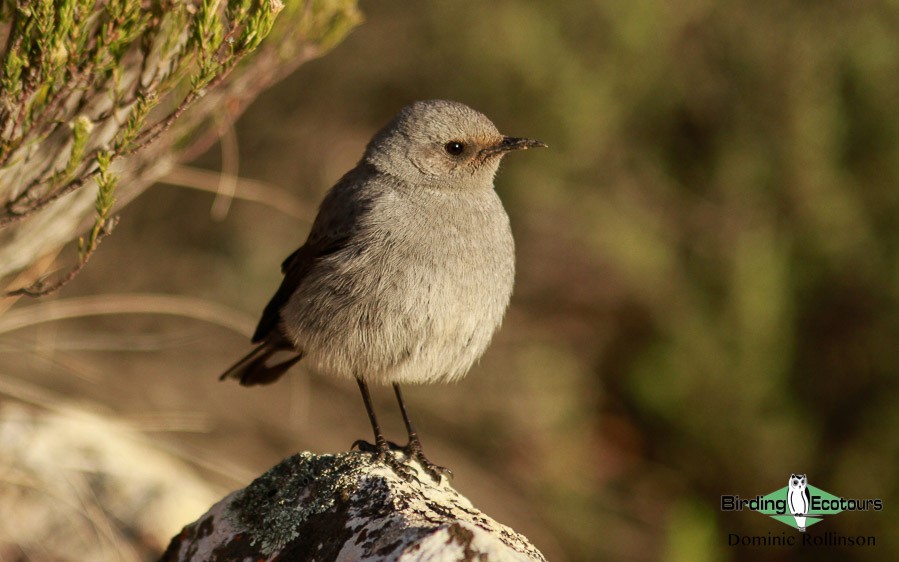
After another excellent sit-down breakfast, we made our way out of the Tankwa Karoo which did not produce much of interest and then we made another stop at Dutoitskloof area to have a further crack at Protea Canary. Unfortunately, despite another good search, the canaries would not show for us, and we had to eventually give up on this tough mountain fynbos endemic. Good birds seen here did however include Cape Rock Thrush, Neddicky and Bokmakierie. We eventually made it back into Cape Town late in the afternoon after a thoroughly enjoyable three days in the dry and dusty plains of the Tankwa Karoo.
DOWNLOAD TRIP REPORT
‘We chose the 2-day Tankwa Karoo birding trip and had an incredible time. I think we saw just short of 90 different species over the 2 days, including many new species for our bird book, which would have taken us years to find without Dom. It was an incredible experience and Dom’s ability to find birds just by their call is something to marvel at.’
Ashleigh
